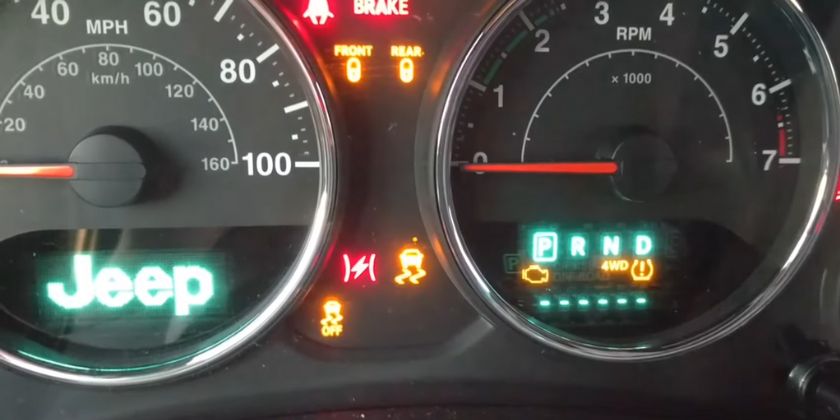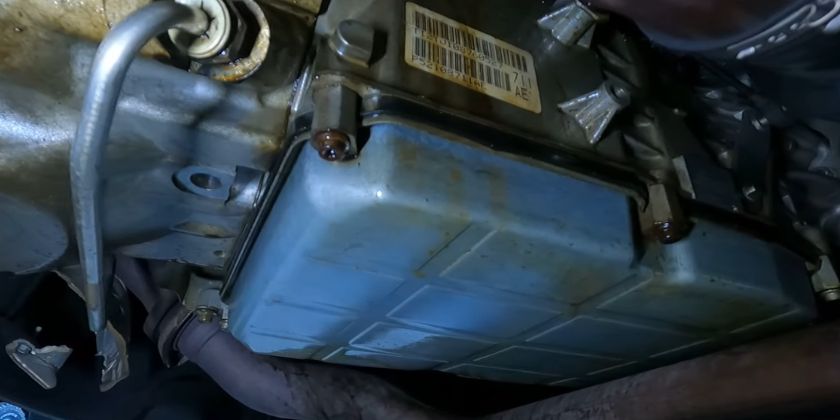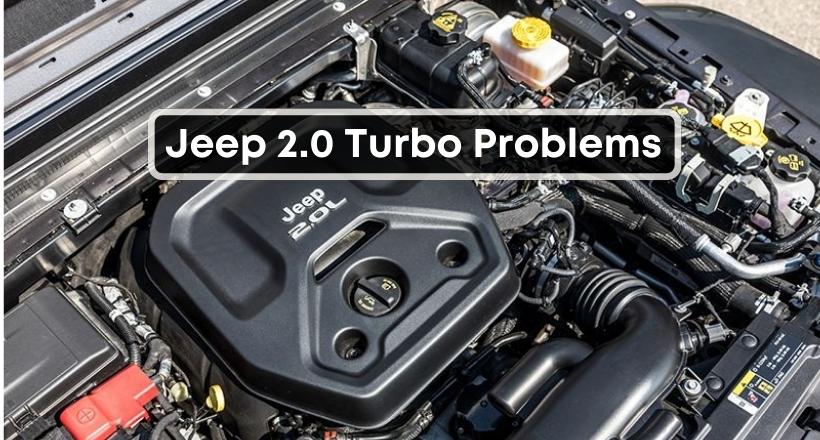The Jeep 2.0L turbo engine has been around for a few years and has established itself as a perfect balance between performance and efficiency.
But like other engines, it is not immune to weaknesses.
Over the years, many have criticized it for issues like turbo lag, oil leaks, higher maintenance costs, the check engine light coming on, etc.
In this article, we’ll talk about these issues in detail.
Jeep 2.0L Turbo Overview
The Jeep 2.0L turbo is an inline 4-cylinder engine used in Jeep Wrangler.
It was first introduced in 2018. Since then, it has become an efficient alternative to previously used V6 engines.
Here are some advantages the 2.0L turbo has over its predecessor:
- Fuel Efficiency: The 2.0L has a smaller displacement than the V6 engines, which allows it to consume less fuel to produce the same amount of power. This, combined with the direct injection and turbocharging technologies, results in the 2.0L being noticeably more efficient than the V6. In some cases, you can even get to 24 mpg mileage.
- Performance: If we talk about the raw power, the 2.0L gives you 270 HP at 5250 RPM, which is not much different than the 3.6L’s 285 HP at 6400 RPM. The same can’t be said about the torque, though. That’s because the 2.0L turbo produces 290 lb-ft torque at 3000 RPM, which is way higher than the 3.6L’s 260 lb-ft torque at 5800 RPM.
- Weight: Thanks to its smaller size and comparatively fewer moving parts, the 2.0L turbo engine is lighter than the 3.6L V6. This lighter weight results in better handling.
8 Common Jeep 2.0L Turbo Problems:
So, now that we have a brief overview of the Jeep 2.0L turbo, it’s time to discuss some issues with this engine.
1. No Manual Transmission Option
The biggest complaint against the Jeep 2.0L turbo engine is the no manual transmission option.
Automatic transmissions are pretty convenient and make driving super easy, but some car enthusiasts still prefer manual transmissions due to the greater control they provide you.
Since they allow you to control the RPM, you can sometimes get more power from manual transmissions.
With that said, I would still not consider it a ‘problem’ because it’s pretty subjective.
2. Turbo Lag
Like all other turbocharged engines, the Jeep 2.0L suffers from turbo lag.
When you suddenly increase the acceleration, you don’t get an instant engine response as the turbocharger needs some time to build up for that boost and provide extra power. This time delay is known as turbo lag, resulting in, among other issues, slower acceleration.
This is one of the reasons why the 2.0L Turbo engine takes slightly more time in 0-60 MPH than the 3.6L V6.
While you can try to reduce this lag through a throttle booster like this one, I would not advise DIYing this stuff as it may sometimes void the warranty (it’s better to consult a mechanic).
And if turbo lag is a dealbreaker for you, then you shouldn’t opt for the 2.0L turbo (or any other turbocharged engine, for that matter) in the first place.
3. Warnings Lights

Many engine-related warning lights can appear on a 2.0L turbo-equipped vehicle’s dash screen.
The common among these is the Check Engine light. It’s represented by an engine icon indicating something’s wrong with the engine (faulty turbocharger/Engine Management System).
While not as scary as other warning lights, you should get your engine checked if it appears on the screen.
Other than that, there can be other warning messages you should watch out for, such as Turbocharger Warning Light, Engine Overheating Warning Light, Oil Pressure Warning Light, Engine Malfunction Warning Light, etc.
And while it’s true that these warning lights help a lot in keeping the driver alert, sometimes they appear for no reason. It happens mainly due to loose connections/wiring, faulty sensors, dirty spark plugs, or battery/alternator problems.
4. Engine Surges
Like turbo lag, the engine surge is related explicitly to turbochargers.
While surging, the engine revs up and down quickly and randomly. For example, you put the brake on sometimes, and the engine accelerates instead of slowing down. It’s annoying and dangerous at the same time.
In most cases, it happens due to a malfunctioning turbocharger. In rare situations, it can also be caused by dirty air filters, vacuum leaks, or faulty oxygen sensors.
That’s why you should consult a mechanic to find the root cause behind this problem.
5. High Maintenance Cost
The 2.0L turbo requires premium fuel (91 or higher octane) for optimal performance. The turbocharger increases the engine’s compression but also generates more heat.
Putting regular fuel in such circumstances can knock the engine or damage the turbocharger. That’s why you need premium fuel for this.
This fuel, along with a 48-volt battery system, frequent spark plug replacements, and expensive turbocharger-related repair jobs (in the future), makes the 2.0L turbo a high-maintenance engine.
6. Oil Leakage

Various components inside the 2.0L turbo engine, such as engine seals, engine block, oil cooler, etc., can leak oil due to wearing out or damage.
This oil leakage decreases the oil pressure and engine performance, increases engine wear, and reduces fuel efficiency. If left unaddressed, it can even cause the engine to fail.
Therefore, you should fix any leakage as soon as it’s detected.
7. Engine Hesitation
Engine hesitation is another common issue reported by Jeep owners.
It happens when you increase the acceleration. In response, the 2.0L stumbles or ‘hesitates’ to speed up.
It primarily happens due to non-premium fuel, a lean air/fuel mixture, or hardware issues like bad gas/clogged fuel filters, dirty fuel injectors, etc.
8. Other Problems
Apart from the issues mentioned above, the 2.0L turbo can also have some other generic problems down the road, such as;
- Engine Misfiring can happen due to spark plug issues, fuel injector problems, or a failing ignition coil.
- Overheating can result from a failing radiator, a failing water pump, or clogged coolant passages.
- Wastegate Rattle is mainly due to some issue with the wastegate or its internal components.
- High oil consumption can happen due to worn piston rings, faulty valve seals, or a damaged turbocharger.
- Engine Rattling can occur due to loose belts, damaged engine mounts, or worn engine components.
Jeep 2.0L Recall
In 2021, Jeep recalled some Wrangler models with a defective plastic fuel supply line connector. This connector is attached to the high-pressure fuel pump and was cracking randomly in those defective vehicles.
It caused Jeep to recall those models as the cracked connector could leak gasoline into the engine compartment, and the vehicle could catch fire.
Conclusion: Is Jeep 2.0L Turbo Reliable?
So, these are some issues you can have with the Jeep 2.0L turbo.
Despite these shortcomings, the 2.0L turbo is a reliable engine as there’s no severe design flaw. And it should serve you 5-10 years of regular usage, provided you do timely maintenance.
If you experience any of the abovementioned issues, it’s better to consult a mechanic as soon as possible. That’s because any delay will aggravate those issues and will eventually cost you more money to fix.
Frequently Asked Questions
How Long Does a Jeep 2.0L Turbo Last?
The Jeep 2.0L turbo will typically last 50,000 miles before any big problem arises. The lifespan should be 150,000-200,00 miles, but it depends on many factors such as maintenance, driving conditions, and usage.
What is the Gas Mileage on a Jeep Wrangler 2.0 Turbo?
The Jeep 2.0L turbo can give you up to 24 mpg on the highway and 22 mpg in the city. But these are rough estimates, and the actual mileage will depend on different factors, such as driving habits, the surface you’re driving on, and weather conditions.
What Oil Does a Jeep Wrangler 2.0 Turbo Take?
The recommended oil for Jeep Wrangler 2.0L is SAE 5W-30.
Does the Jeep 2.0L Turbo Require Premium Fuel?
Jeep says the 87 octane-rated fuel (regular gasoline) can be used in the Jeep 2.0L turbo. But you will need 91 octane-rated fuel or higher for optimal engine performance, especially in hot weather or under heavy load.
What Happens if You Use Regular Gas in a Turbo Engine?
Using regular gasoline in a turbo engine can have severe consequences in the form of engine knock or detonation, reduced engine performance, and increased carbon buildup.
What is the Torque Rating for the 2.0L Di Turbo I4?
The torque rating for the 2.0L Di turbo I4 will vary depending on the specific model and year. In the 2021 Jeep Wrangler, the 2.0L Di turbo I4 engine is rated to produce 295 lb-ft of torque.


Well written and very informative.